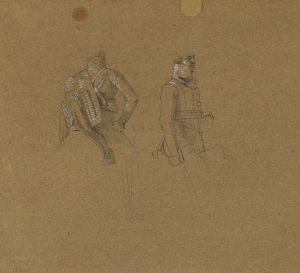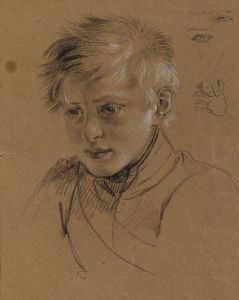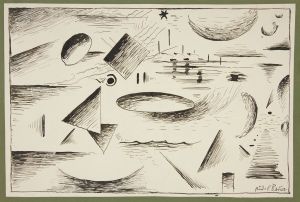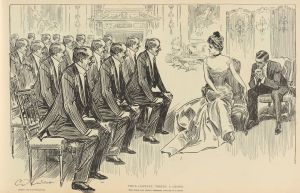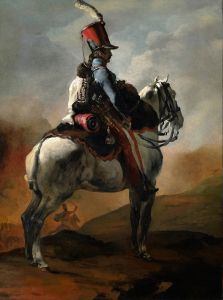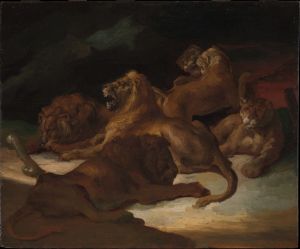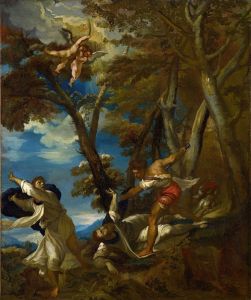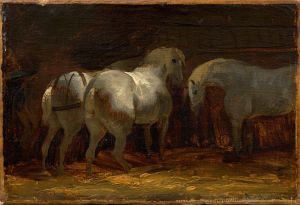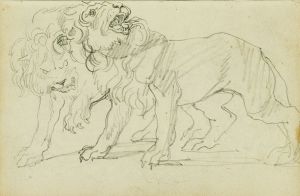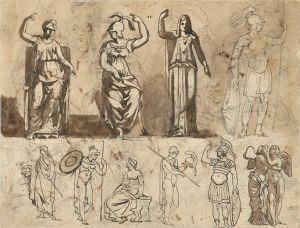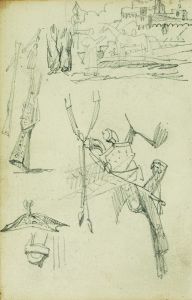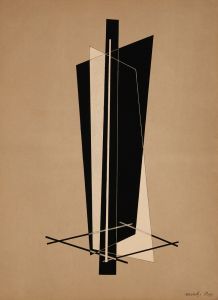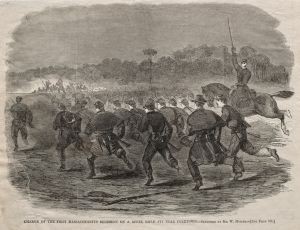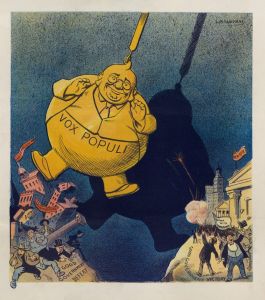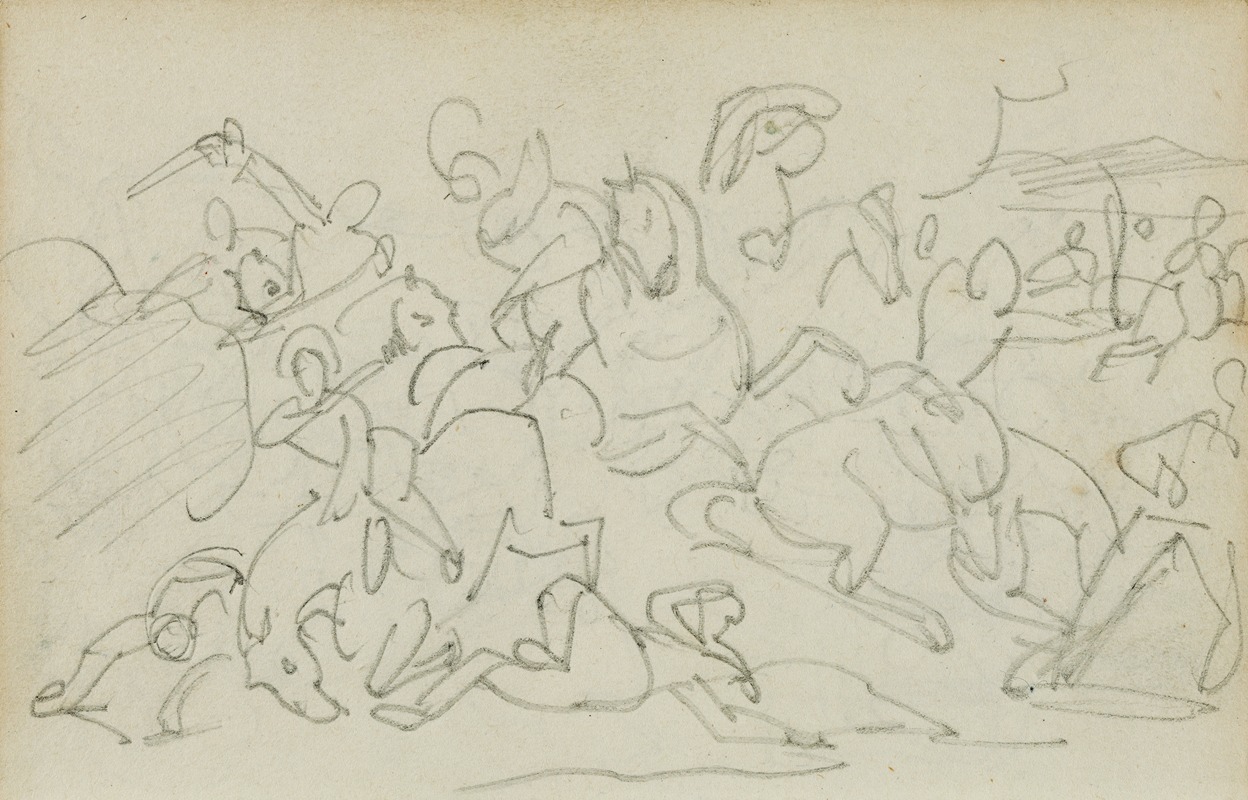
Cavalry battle
A hand-painted replica of Théodore Géricault’s masterpiece Cavalry battle, meticulously crafted by professional artists to capture the true essence of the original. Each piece is created with museum-quality canvas and rare mineral pigments, carefully painted by experienced artists with delicate brushstrokes and rich, layered colors to perfectly recreate the texture of the original artwork. Unlike machine-printed reproductions, this hand-painted version brings the painting to life, infused with the artist’s emotions and skill in every stroke. Whether for personal collection or home decoration, it instantly elevates the artistic atmosphere of any space.
Théodore Géricault's "Cavalry Battle" is a notable painting by the French Romantic artist, created around 1818-1820. Géricault, born in 1791, was a pivotal figure in the Romantic movement, known for his dynamic compositions and dramatic use of color and light. "Cavalry Battle" exemplifies these characteristics, showcasing his fascination with intense emotion and movement.
The painting depicts a chaotic and violent scene of a cavalry skirmish, capturing the tumult and ferocity of battle. Géricault's attention to detail and his ability to convey the physical and emotional strain of combat are evident in the contorted bodies of the soldiers and horses. The composition is marked by a swirling mass of figures, with a strong diagonal thrust that enhances the sense of action and urgency.
Géricault's interest in military subjects was influenced by the Napoleonic Wars, which had a profound impact on Europe during his lifetime. His works often reflect the heroism and tragedy of war, and "Cavalry Battle" is no exception. The painting's dramatic intensity is heightened by Géricault's use of chiaroscuro, the contrast between light and dark, which adds depth and a sense of three-dimensionality to the scene.
The artist's technique in "Cavalry Battle" demonstrates his mastery of anatomy and movement. The horses, in particular, are rendered with remarkable accuracy and vitality, showcasing Géricault's extensive studies of equine anatomy. This attention to detail not only adds realism to the painting but also emphasizes the power and grace of the animals amidst the chaos of battle.
Géricault's "Cavalry Battle" is also notable for its emotional impact. The expressions of the soldiers, ranging from determination to despair, convey the human cost of war. This focus on the psychological aspects of combat was a departure from the more idealized representations of battle common in earlier periods, aligning Géricault with the Romantic emphasis on individual experience and emotion.
The painting is part of Géricault's broader body of work that explores themes of struggle, conflict, and the human condition. His most famous painting, "The Raft of the Medusa," shares similar themes of suffering and survival, and both works reflect his commitment to depicting the raw and often brutal realities of life.
"Cavalry Battle" is housed in the Louvre Museum in Paris, where it continues to be admired for its technical prowess and emotional depth. The painting remains an important example of Géricault's contribution to the Romantic movement and his ability to capture the intensity of human experience through art.





